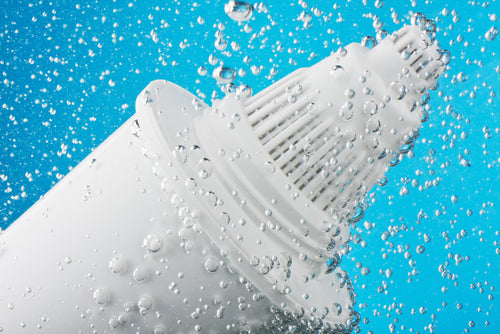
Sep 18 , 2017
Learn All about the Fascinating History of the Water Filter
Humans rely on water for survival. Access to water seems easy because a majority of the earth is covered by rivers, lakes, and oceans.
However, much of that water is not clean or safe to drink.
Ancient Attempts at Water Filtration
Even ancient peoples knew the importance of clean water, and records dating from 2000 BC indicate attempts to purify water. At that time, people used methods to filter water through sand or charcoal. Such methods produced better-tasting and cleaner water.
As the medical field developed, Hippocrates conducted early experiments on water purification. He believed water could have healing powers. However, he was concerned that the water available through Greek aqueducts tasted bad and, therefore, was not clean.
Hippocrates designed the Hippocrates Sleeve as an early device to purify water. This appeared like a cloth bag. Water could be boiled and then poured into the bag, and the cloth would trap the sediments. Bag filters are still used today.
The Middle Ages Brings Filtration Innovations
In 1627, Sir Francis Bacon continued water filtration experimentation. He began experimenting with desalination of salt water, believing that ocean waters could be purified for drinking. He used a sand filter method and, unfortunately, his exact method did not work. Luckily, this did lead to additional research on water filtration as other scientists continued to explore options.
Invention of Microscope Helps Water Filtration
The Renaissance was a period of scientific growth. As many scholars were working to make new discoveries, one important invention was the microscope, which allowed for the close study of water. Now, people could see the tiny particles of microbes and bacteria naturally present in water. This allowed for more improvements in water filtration to remove impurities.
Improved Filtration and Water Filters Saved Lives
During the 19th century, London faced a deadly cholera outbreak. Soon, officials linked the spread of cholera to drinking water. Researchers found there were fewer cases of cholera in areas where well-designed sand filters were installed. One scientist, John Snow used a microscope to verify the presence of cholera bacteria in unfiltered water. Soon, officials enacted government regulation, mandating the installation of sand water filters throughout London.
Municipal Water Treatment Improves Water Access
People began advocating for equal access to clean drinking water. Early efforts to give access to clean water involved the possibility of sand filters in each home. People realized that municipal water treatment plants would be an efficient way to provide filtered water to the masses.
The first municipal water treatment plant used slow sand filters. Soon, similar systems were established throughout England. The Metropolis Water Act of 1852 required all water in London be treated by slow sand filtration. However, this system required maintenance. In the U.S., rapid sand filters were put into use. These were faster and more easily maintained.

Chlorine Is Added to Purify Water
As advances were made in water filtration, researchers discovered chlorine could act as a disinfectant to cleanse water. This helped to reduce deaths related to typhoid and dysentery. The use of chlorine is now widespread through municipal water treatment plants, and U.S. residents receive chlorinated drinking water in their home faucets.
People are concerned that chlorines presence in water may be dangerous. For example, research indicates it could be harmful to the respiratory system when it vaporizes from water when showering. This concern is addressed with shower filters that attach to your shower head.
Water Filtration Progresses to Today
Lobbyists worked to enact the EPA and the Clean Water Act of 1972. This led to the creation of water treatment plants to reduce water contamination.
Today, Americans benefit from technology that brings water directly to our home. However, in some areas of the country, the water may still be contaminated with pathogens and chemicals that are hard to eliminate.
Modern Water Filter Solutions
Many people are choosing to filter their own water. One efficient way to filter water is with a whole-house water filter system. These remove chlorine, microbial organic materials, and chemicals. Water filters are also available to meet many needs. For example, your refrigerator water dispenser can be outfitted with a water filter, ensuring clean, drinking water. If you reside someplace where you are unable to install your own larger water filter system, try smaller options such as the Culligan faucet filter.

Conclusion
Most of us are lucky to have easy access to safe water; however, it does still have some impurities you can filter out with additional water filter methods. Use a variety of options to match your home or business, ranging from a filtered countertop water cooler to smaller personal use water pitcher filters, to ensure your water is pure.


